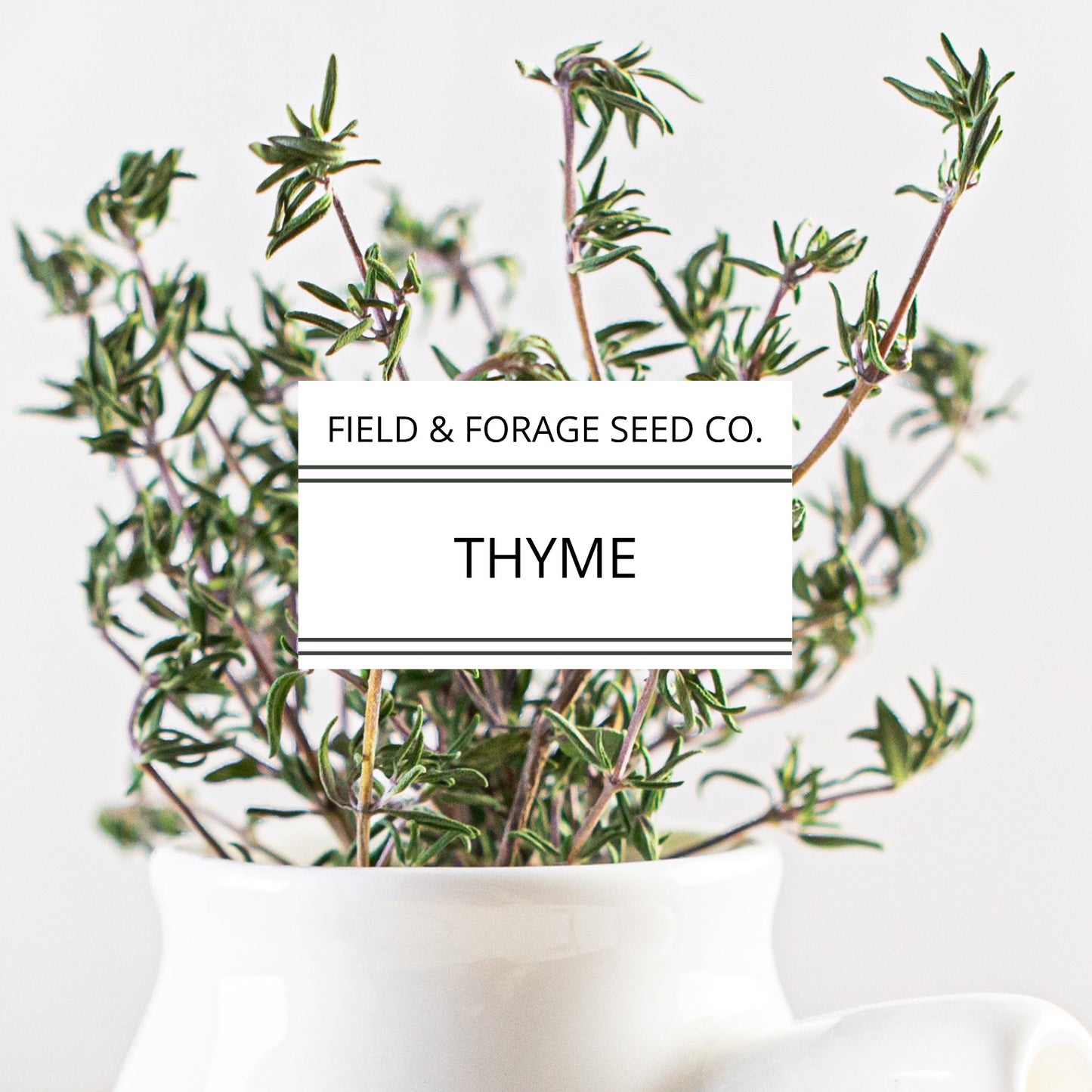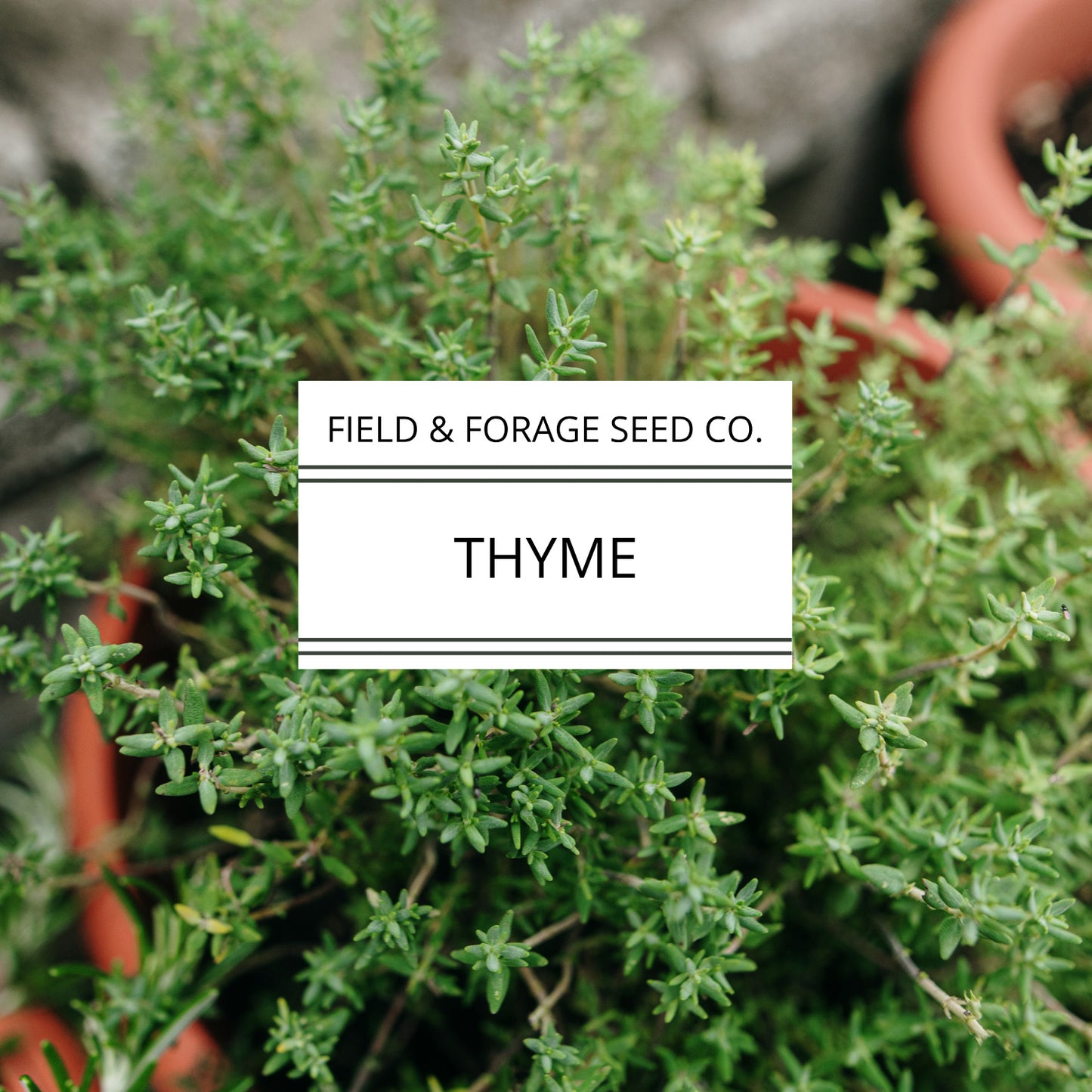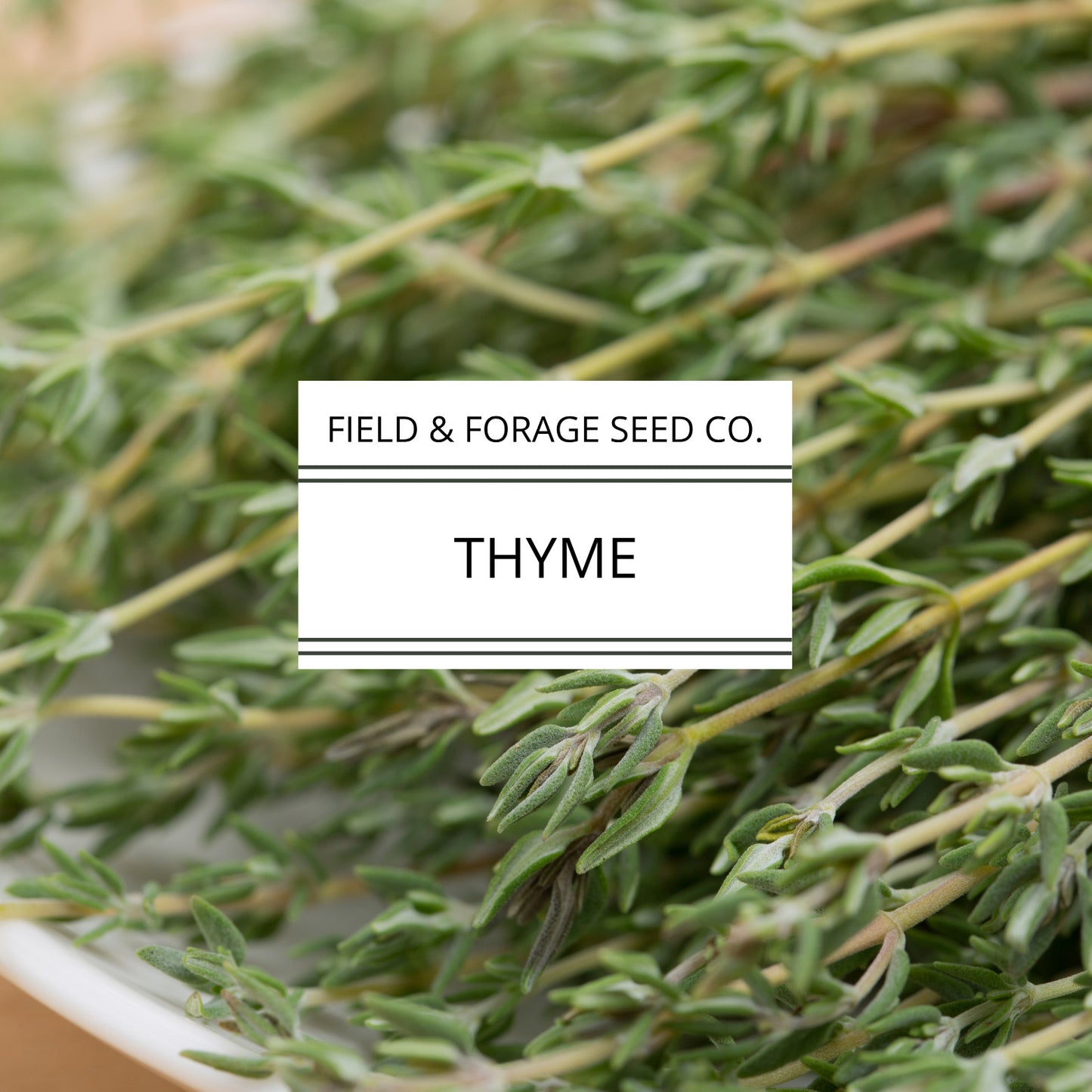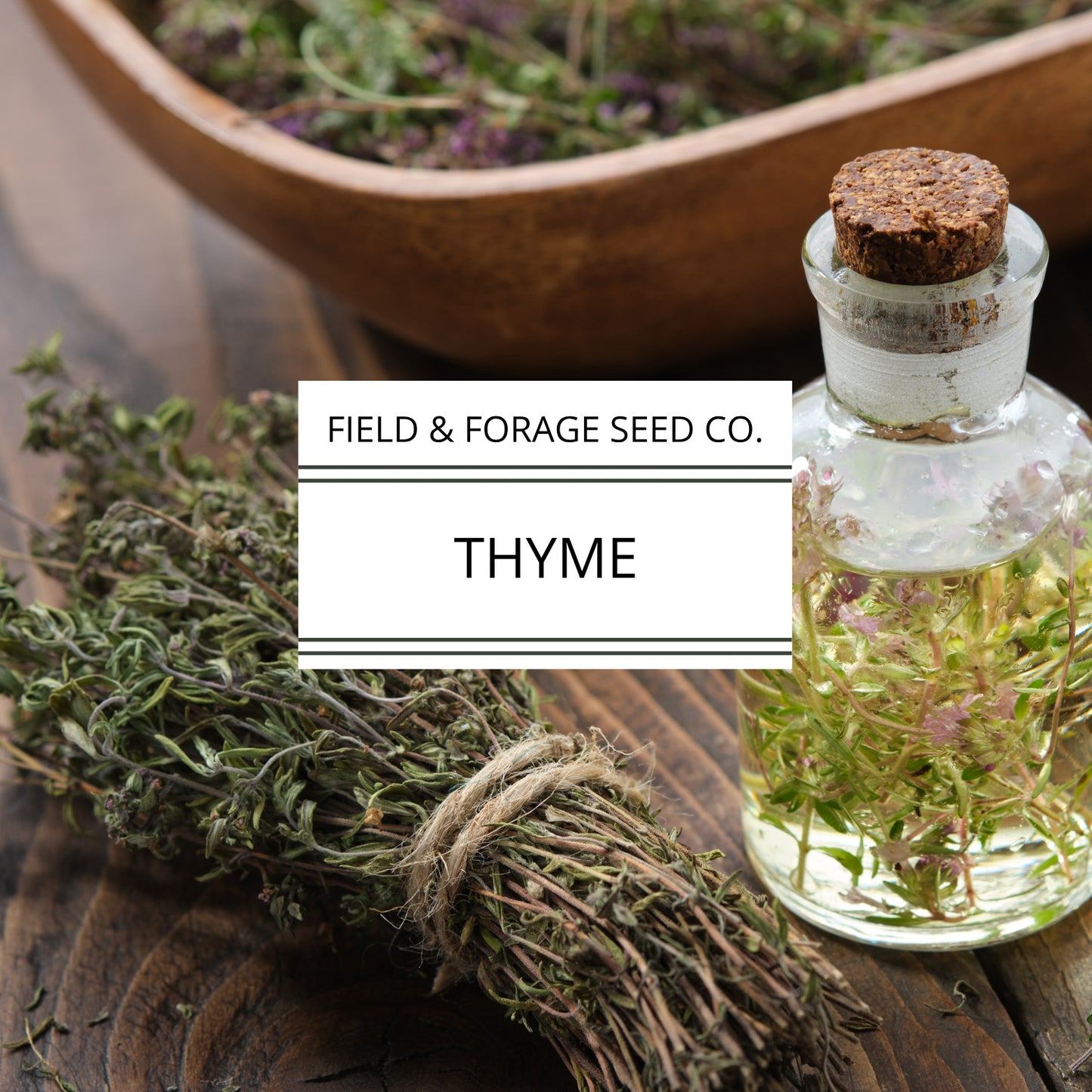Field and Forage Seed Co.
Thyme | Thymus vulgaris | Heirloom | Non-GMO | 100 Seeds
Thyme | Thymus vulgaris | Heirloom | Non-GMO | 100 Seeds
Couldn't load pickup availability
Thyme | Thymus vulgaris | Seeds | Heirloom | Non-GMO | 100 Seeds
A low-growing herb with timeless appeal, Thyme brings fragrance, flavor, and charm to garden beds and kitchen pots alike. With petite, aromatic leaves and delicate pink-lavender flowers, it’s a culinary powerhouse and pollinator favorite. Use it fresh or dried in everything from roasts to teas—and let it fill the gaps between stepping stones or border your beds with rustic beauty.
Thyme is hardy, drought-tolerant once established, and one of those herbs that quietly earns its spot year after year.
SKILL LEVEL: Beginner-Friendly
Thyme is easy to grow, forgiving of dry soil, and ideal for containers, borders, or even rock gardens. Great for new gardeners ready to expand their herb game.
Pollinator Friendly:
• Attracts bees
• Supports butterflies
• Blooms draw hoverflies and beneficial insects
Planting & Care Details:
• Light: Full Sun
• Plant Height: 6–12"
• Spacing: 8–12" apart
• Watering: Low; prefers dry conditions once established
• Soil: Well-drained, sandy or rocky
• Frost Tolerance: Hardy perennial in Zones 5–9
• Zones: 4–9 (with protection)
GERMINATION INSTRUCTIONS:
Start indoors 6–8 weeks before last frost. Sow seeds on surface of moist soil; press in lightly but do not cover. Requires light to germinate. Keep at 65–70°F. Germinates in 10–21 days. Transplant when plants are 2–3" tall.
TIPS FOR SUCCESS:
• Thin seedlings early to encourage airflow
• Prune regularly to prevent woody stems
• Harvest before flowering for peak flavor
• Avoid soggy soils—thyme likes to dry out between waterings
Culinary & Garden Uses:
Perfect in soups, stews, roasted vegetables, and herbal teas. Makes a fragrant groundcover or filler between pavers. Also ideal for drying, infused oils, and spa blends.
Share











